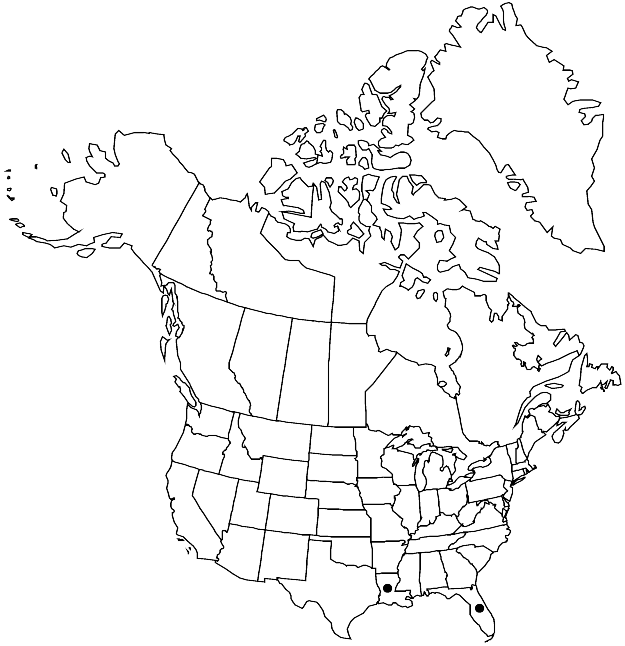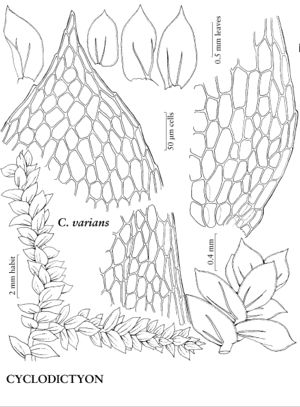Cyclodictyon varians
Revis. Gen. Pl. 2: 835. 1891.
Plants with metallic luster when dry. Stems and branches adherent to soil by rhizoids, much branched; hyalodermis 1-stratose, median cell-walls firm; sparsely radiculose. Leaves with costa slender; basal laminal cells oblong or rhomboidal; medial cells oblong-hexagonal, 29–40 µm wide, 1.5–2: 1; marginal cells linear, concolorous, in 1 row, walls thin. Perichaetial leaves ovate to lanceolate, small. Seta 1.1–1.6 cm, somewhat sinuate. Capsule ± asymmetric; exothecial cells not collenchymatous. Calyptra rostrate, scarcely longer than operculum.
Phenology: Capsules mature fall–winter.
Habitat: Wet places, aquatic, soil, humus, leaf litter, soil over limestone, limy sandstone rock, springs, hammocks, stream banks, limestone sinks, deep ravine bottoms in deeply shaded forests
Elevation: low elevations
Distribution

Fla., La., West Indies, Bermuda, Central America, n South America
Discussion
Cyclodictyon varians is rare in the flora area, found in several counties of Florida and Louisiana in Iberia Parish. Hookeria acutifolia is also large, flaccid, and pale green, and has large, lax laminal cells with an indistinct border of narrower cells; it is distinguished by complete absence of costa. Hookeria leaf apices are gradually acuminate, whereas those of C. varians are abruptly acuminate. Callicostella pallida leaves have no border of differentiated cells, and though they also have two costae, those are strong (not weak), ending near the apex (not 1/2–2/3 before the apex), and the cells lumens are centrally 1-papillose. H. A. Crum and L. E. Anderson (1981) discussed the doubtful report of Cyclodictyon obliquicuspis (Müller Hal.) H. A. Crum & E. B. Bartram [= C. roridum (Hampe) Kuntze] in Florida, reported in a paper by W. H. Welch (1971).
Selected References
None.
Lower Taxa
"divergent" is not a number.
